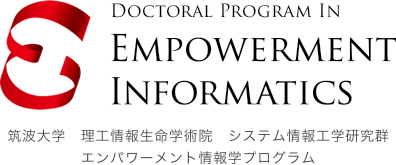授業「宇宙芸術ワークショップ2016」にて無重力実験及び成果報告会を実施しました。
逢坂 卓郎特命教授が実施するエンパワーメント情報学プログラム(EMP)の高度専門科目「宇宙芸術ワークショップ2016」にて、2016年10月27日、28日に、無重力実験フライト、11月10日に、その実験成果報告会が行われました。
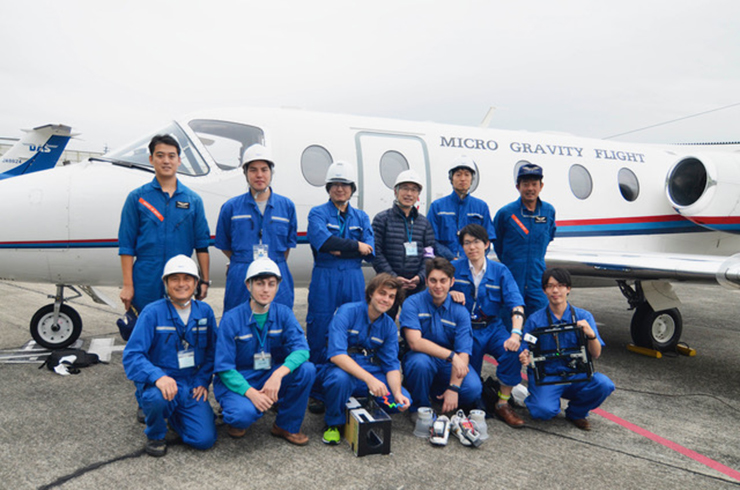
高度専門科目「宇宙芸術ワークショップ2016」について

EMPの演習授業「宇宙芸術ワークショップ」は、工学と芸術が融合された視点から宇宙時代に於ける芸術について様々な提案を行おうとするものです。宇宙開発に於ける成果は、地球外からの視点と無重力環境に於ける新たな世界観の創出だと思われます。私たちは無意識のうちに重力と対峙し、デザインされた建築やプロダクト製品に囲まれて生活し、思索と創造を続けてきました。無重力環境では水平と垂直の概念とともに感覚も解放されます。宇宙ではむしろ、重力のない環境が日常なのです。
授業では1900年代から始まった 0-G Art(無重力芸術)に注目してリサーチを行い、JAXAの研究者からアドバイスを受けて芸術モデルを制作します。更に、航空機による無重力環境の中で実験を行い、0G環境に於いて可能となる表現の探求を行います。人類の夢であった浮遊体験を通し、工学や芸術の在り方について、また、私たちが生きてきた環境や条件、つまり地球と私たち自身をも再考する契機となることを期待します。
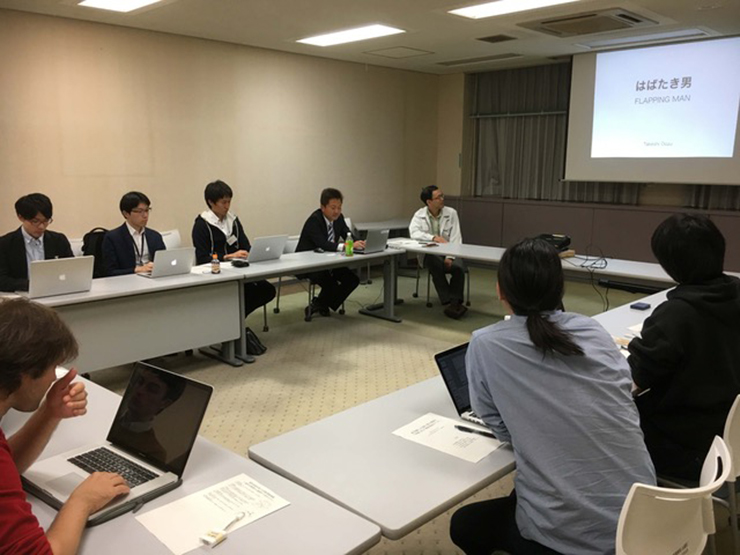
JAXAでのミーティングの様子
今年度は 10月に2回のフライトを通して14回の無重力実験を行いました。「魚型ロボットの空中遊泳」「磁力による惑星運動の視覚化」「はばたき男」「真空システムによる移動靴」「LED Bio Suits」などの作品が新しい世界を展開しました。大学の授業で、航空機による無重力芸術実験を行なっているのは国際的にも筑波大学 EMPだけだと思われます。来年度もオリジナリティー豊かな学生のアイデアを期待します。
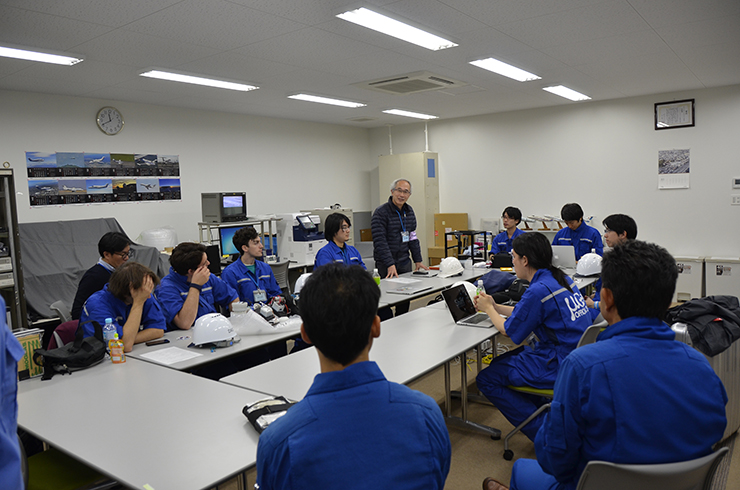
無重力実験ミーティングの様子 於:名古屋空港(株)ダイアモンドエアサービス
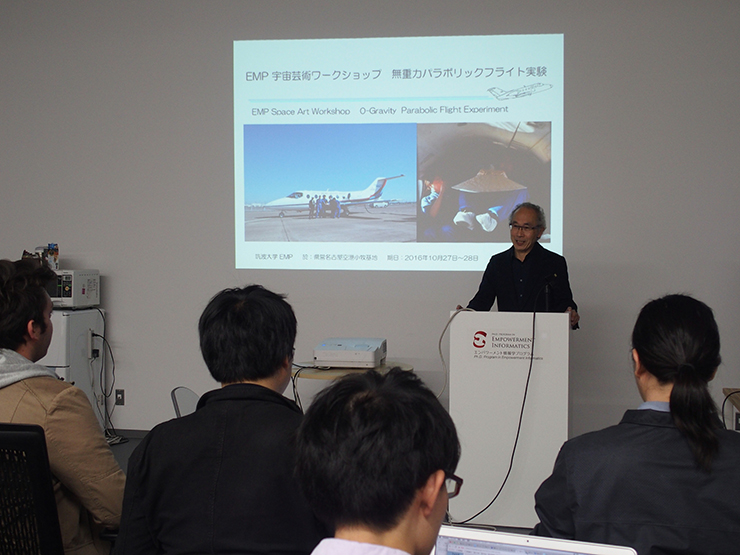
成果報告会の様子
航空機による無重力実験について参加学生のレポート・感想

As part of the ‘Space Art’ course in the EMP program, we had the opportunity to design, develop and test our projects in a micro gravity flight at the DAS site in Nagoya. The course was very challenging, exciting, enjoyable and unlike any other I had experienced as a student. The greatest challenge was working solely of an idea and a vision – developing a project that could only be tested once you were in the zero gravity conditions. Once we arrived at the DAS site we met in the briefing room and introduced ourselves, our projects and our intended experiments. We then split into 2 groups of 4, the first group was flying on the first day and my group was flying the next day. The briefing before the flight included a safety check of the prototypes, a health survey to make sure we were physically well to fly, a weather report of the day and the intended flight plan. The DAS team were very helpful in preparing us for our experiments and were a pleasure to work with.
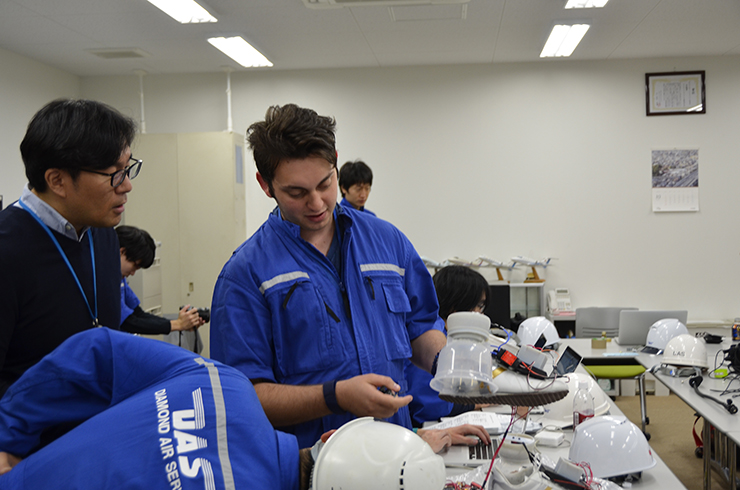
無重力実験準備の様子(「Space Gilders」2年次 Ishac Karlosさん)
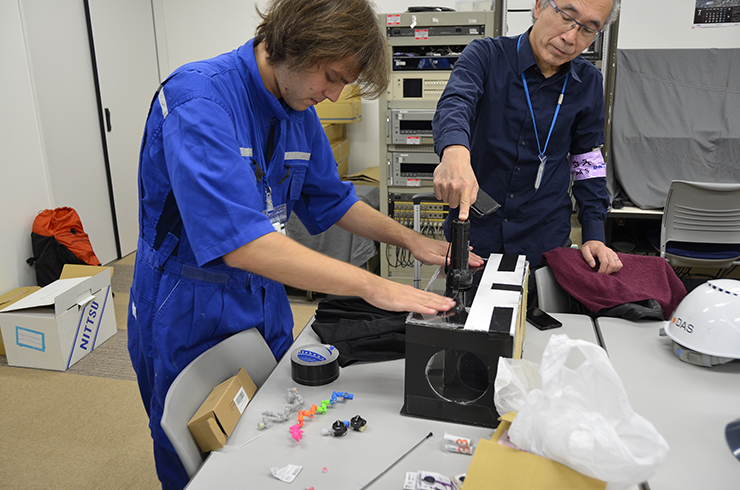
無重力実験準備の様子(「Kinetic Sculpture “Zero-G Protein”」3年次 Boem Albertoさん)
My project was called ‘Space Gliders’, an exoshoe that allowed the user to stick to surfaces such as the floor and ceiling. My vision was to improve and add a new dimension of personal mobility for astronauts in 0 gravity conditions to give them more control during tasks and reduce support structures in aircrafts that take up a lot of interior space and increase the weight of the aircraft. I also envisioned it being used as a stabilizer for the user so that they can use it as an apparatus to assist in exercise and training. The exoshoes were controlled using 2 small joysticks I attached to my hands. To my joy the prototypes worked under the 0 gravity conditions and I was able to stick to the floor and ceiling of the aircraft! In the future I would like to add wheels to the system to allow astronauts to ‘skate’ around in the aircraft.
Overall the entire experience was amazing and I am very grateful, I hope to participate again in the micro gravity flight experiments in the future and further my research in astronaut personal mobility.
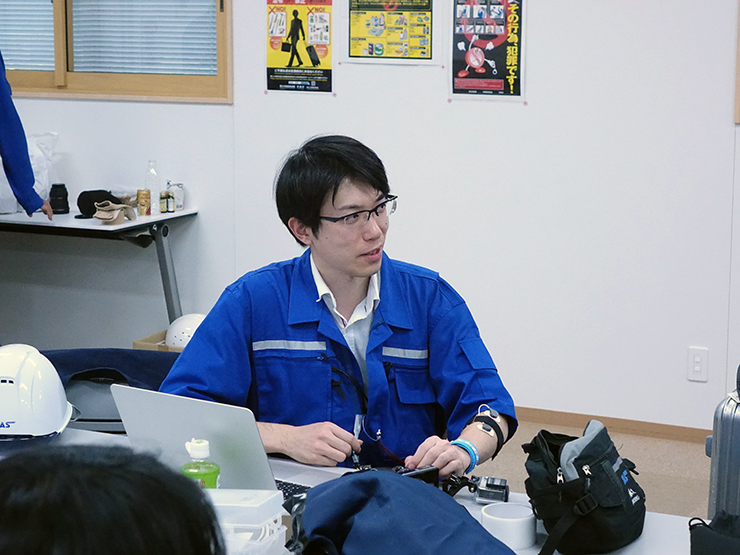
無重力実験準備の様子(「LED Bio Suits」3年次西田 惇さん)
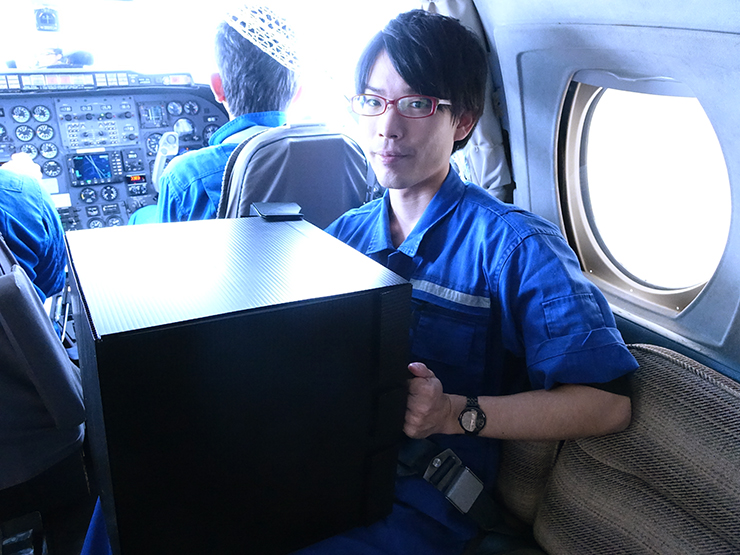
航空機の中で(「Zero-G Pendulum」3年次 髙鳥 光さん)
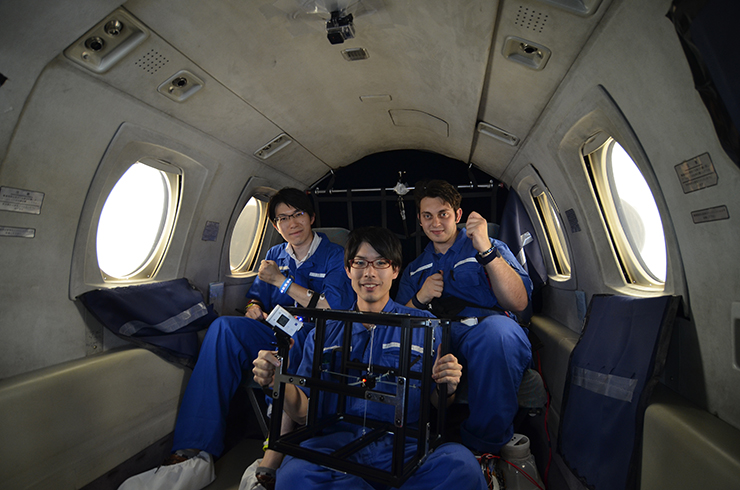
航空機の中で

全身を動かすようなパフォーマンス等も行えると聞いたので、「はばたき男」というパフォーマンスを行いました。これは、地上では重力の制約等で不可能な、はばたくという空を飛ぶジェスチャーを利用した空間移動をμグラビティ下で行うものです。
パラボリックフライトでは0Gの前に2G環境が形成されるので、無重力と高重力環境、その遷移を一度のフライトで体験できました。2G環境も自分の身長が半分になったようで印象的でした。その後の0G環境はさらに不思議な感覚で、最初の数瞬は落下していくような感じを受けました。その後浮かびながら体を動かす、無重力状態とはどのようなものかを頭と体で理解し、適応していきました。
はばたき男の実験結果については、大きなうちわを使用したはばたきによる空中移動に成功しました。推力の小ささや発生する気流の影響などの課題はありますが、発展させれば無重力で大気のある大空間での空中移動等に活用できるかもしれません。
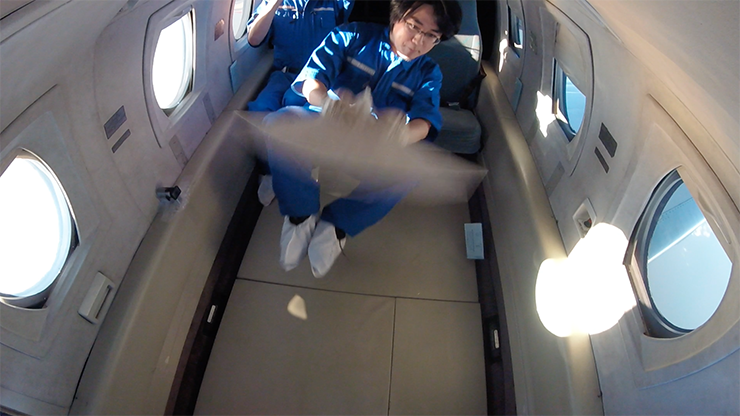
無重力実験の様子(「はばたき男」2年次 大図 岳さん)
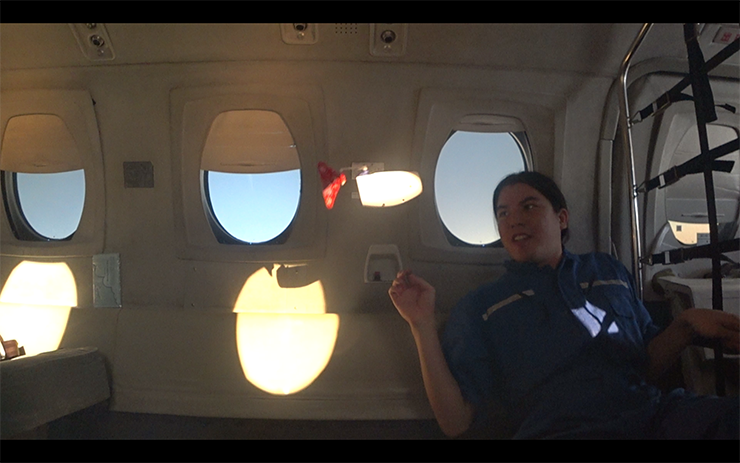
無重力実験の様子(「魚型ロボットの空中遊泳」1年次 高嶋 倫太郎さん)
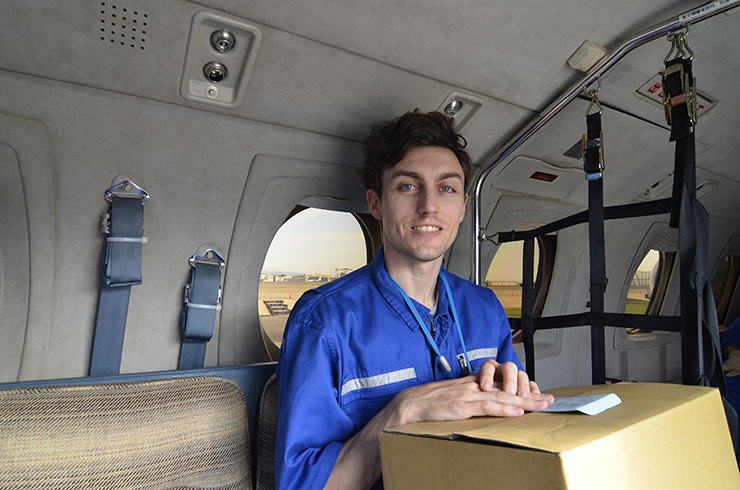
航空機の中で(「Zero-G Music Score」3年次 Brumley Johnさん)
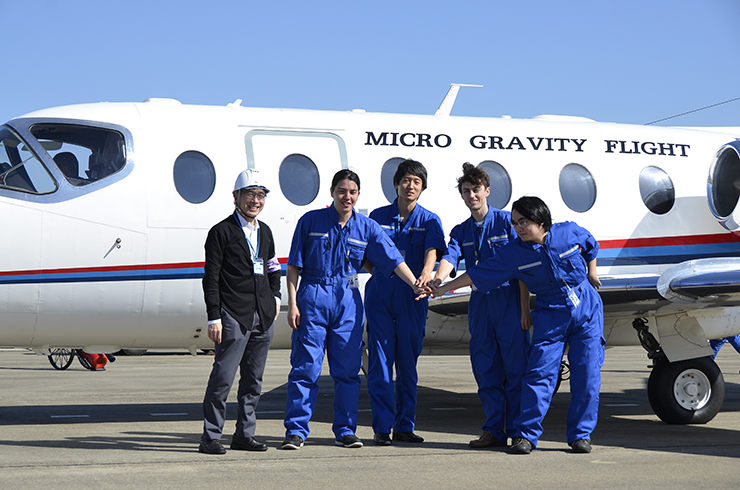
航空機の前で
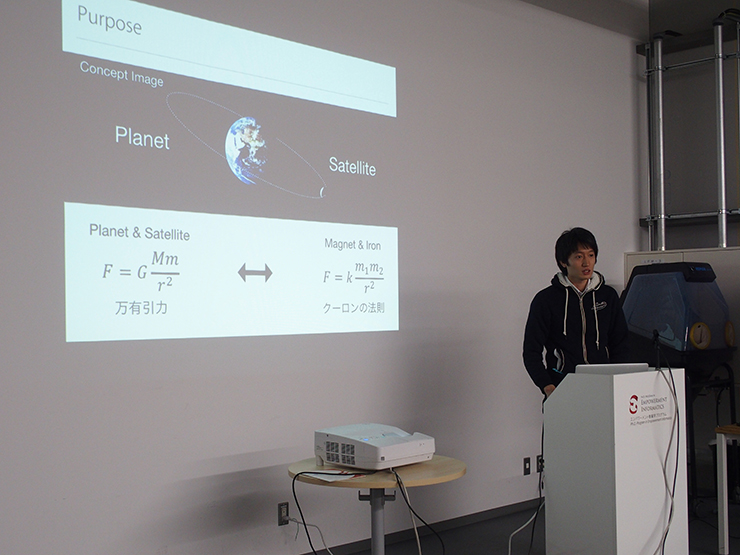
成果報告会の様子(「磁力による惑星運動の視覚化」3年次 利根 忠幸さん)
航空機による無重力実験の様子(動画)

Zero-G Pendulum:本プロジェクトでは、ブラックバーン振り子の「異なる周期をもつ単振動の組み合わせ」という運動の性質を維持したまま、通常は重力によって制限されている上下方向にも運動を拡張し、重力から自由になった錘が描く立体的なリサジュー図形を観察することを目的としています。


